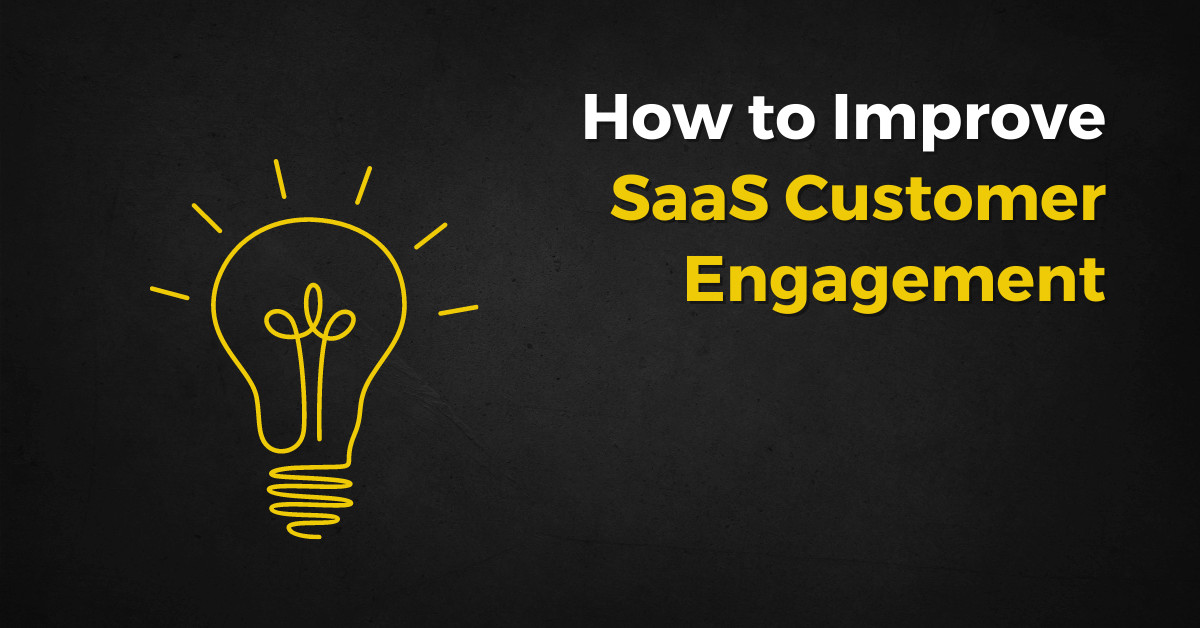A value metric is the way you measure value exchange in your product.
Ultimately, value metrics are the linchpin to successfully executing a product-led go-to-market strategy. Why? Because you're aligning your revenue model directly with your customer acquisition model.
Your value metrics are vital in how you price your product, set up your product metrics, and build your team. But what the heck does it look like?
- For a video platform like Wistia, a value metric could be the number of videos uploaded.
- For a communication application like Slack, a value metric could be the number of messages sent.
- For a payment processing platform like PayPal, a value metric could be the amount of revenue generated.
According to Patrick Campbell, CEO of ProfitWell, there are two types of value metrics: functional and outcome-based.
Functional Value MetricsOutcome-Based Value MetricsPricing scales around a function of usage
Example frequency metrics: "per user" or "per 100 videos"Charge based on an outcome
Example outcomes: how many views a video received, how much money you made your customer
Now, many SaaS businesses rely on feature differentiation to justify higher price points. But this comes at the cost of higher churn. As Campbell notes, value metrics outperform feature differentiation with up to 75% less churn. Outcome-based value metrics take this a step further with an additional 40% reduction in churn.
Campbell continues:
This trend continues further when looking at expansion revenue. Both value metrics still outperform feature-differentiated pricing models with at least 30% more expansion revenue, but outcome-based value metrics push those gains to nearly 50%.
We all don’t have the luxury of pricing based on the outcome, though, because sometimes it’s hard to perfectly measure how much money someone gained from using your product or how much that time you saved them is worth. Yet, we can still take a lesson from this data in making sure we get as close to that customer and as close to value as technically possible.
Why value metrics are important
Value metrics are useful in answering two key questions:
- What does our ideal customer want in a product or service like ours?
- How much is the ideal customer willing and able to pay?
Many customers will subscribe to your SaaS-based primarily on the value it provides. They’re willing to spend money because of what they get in return. Value metrics represent what the value looks like and what’s needed to push a customer to sign up, upgrade, or renew.
You can also use value metrics to determine why users remain on a free plan instead of upgrading. Just the same, why do users downgrade to a free or lower-priced plan as opposed to maintaining their current plan or upgrading?
There are other critical metrics – such as customer lifetime value and customer acquisition cost – but these shouldn’t replace value metrics. Value metrics are too powerful to ignore.
Before we dive into how to find your value metric, let's step back and identify what makes a good value metric.
What makes a good value metric?
According to Campbell, a great value metric must display these three features:
1. It’s easy for the customer to understand.
When someone visits your pricing page, will they immediately know what they’re paying for and where they fit in your packaging? If not, you need to pick a new value metric.
Below is a sample pricing page detailing the different options for Appcues.

Viewing how your competitors charge if you’re in an established market makes sense. Many competitors might use a similar value metric. For instance, if you’re in the email marketing space, most solutions charge by the number of contacts you have, so using contacts as your value metric makes sense.
However, if you’re in an emerging space like AI, you’ll want to opt for a more data-driven approach to discover your value metric, something we’ll cover later.
In addition to making it easy for your customers to understand your value metric, make sure that your value metric aligns with the value customers receive by using the product.
2. It’s aligned with the value the customer receives from the product.
Consider the low-level components of your high-level outcome. Let’s say you have a live-chat solution. To acquire more customers, you need to monitor how many messages customers have on their websites with your live-chat solution.
Here’s a simple live-chat option from FreshBooks.

By tracking the number of conversations, you’re able to see, at a high level, how much value they’re getting. Typically, most SaaS companies use product-qualified leads (PQLs) to measure this internally.
Or, if you run a churn-prevention solution, you need to monitor how many customers set up automated emails that prevent churn due to credit card failures. Depending on how many emails are sent to recover churned customers, you can easily see your impact on saved revenue.
In both examples, we’re simply looking for what it takes to achieve a specific outcome.
What core components lead someone to experience a meaningful outcome when it comes to your product?
- Is it the number of contacts used by your CRM?
- Is it the number of live-chat conversations started?
- Is it the content they download?
3. It grows with your customer’s usage of that value.
If customers get incredible value from your product, charge them more - your product is worth it. On the flip side, charge customers less if they aren’t getting the full value from your product.
Slack does a great job emphasizing this on its pricing page by creating a fair billing policy. Given that Slack’s value metric is the number of users you add to the messaging platform, it makes sense to charge per user.

However, if you’re an enterprise with a large number of users, one of your most significant objections is not knowing how many people will use the platform. Slack created a fair billing policy to combat this: you get charged only for active users.
Although it’s easy to suggest what makes a good value metric, it’s even easier to choose the wrong one.
The common mistake of user-based pricing
One of the most common traps is charging per user. For many businesses, charging per user is like tying a rope to an anchor already tied to your feet, and then tossing the anchor overboard. You’ll get dragged down until you figure out how to cut the rope and pick a new value metric.
As ProfitWell’s Patrick Campbell explains, “The reason per-user pricing kills your growth and sets you up for long-term failure is that it’s rarely where the value is ascribed to your product.”
If you get charged by the user, will you share that product with your entire team? Or are you going to limit the usage to a select few? If you have a messaging application like Slack, it’s perfectly fine to charge by the user - the product has network effects and gets more valuable with more people.
But Slack is the exception, not the rule. So why is user pricing still the most common way people price solutions, according to the Pacific Crest Survey? Part of the reason is that most companies don’t know better and don’t have anyone to evaluate objectively if per-user pricing makes sense. Why?
“It’s counterintuitive," Campbell notes, “but because pricing touches on every single part of your business, it’s often ignored. That’s because it’s at the intersection of marketing, sales, and product - so nobody in the organization owns it.”
If you think about it, this happens all the time in volleyball. Whenever the ball goes directly between four players, everyone assumes someone else will get the ball, so nobody gets it. Don’t you hate when that happens?
Per-user pricing scratch pad
Now that we’ve covered what makes a good and bad value metric, it’s time to define yours.
ConditionExampleTrue?Each user receives differentiated value from accessing the productLinkedIn Recruiter⬜️The customer has a strong need to standardize their department or company on the platformSalesforce⬜️The product has network effects, where initial users want to collaborate and invite othersSlack⬜️Budget predictability and control is critical for your buyer persona(s)DocuSign⬜️Buyer is less sophisticated and needs easy-to-understand pricingEvernote⬜️Usage metrics in your industry have become commoditized or are becoming table stakesGitHub⬜️
This is the fun part!
How to find your value metrics
Finding your value metrics helps you monitor if users achieve meaningful outcomes in your product. They also play a critical role in reshaping your pricing strategy.
Choosing your value metric doesn’t need to be complicated — you don’t even need to get it right the first time. If you’re a small company, you can afford to test several hypotheses (as long as you take a data-driven approach).
I’ll go through two strategies to help define your value metric depending on your company size. For the best results, I’d recommend using both approaches in unison.
Step 1: Subjective analysis
By now, you should have at least a couple of hypotheses about your value metric:
- Is it messages sent?
- The number of users?
- Total revenue generated?
Pull out a piece of paper and jot down everything you think could be a value metric. Once you have the list, run it through the value metric scratchpad.
Value metric scratchpad
ConditionTrue?It’s easy for the customer to understand⬜️It’s aligned with the value that the customer receives in the product⬜️It grows with your customer’s usage of that value⬜️
How did your value metrics stack up? Did you find a value metric that works? If not, stop reading this and continue brainstorming new value metrics until you have one that passes these three conditions. I can wait.
From this point, the entire focus is on helping your users experience this value metric from your product as quickly and often as possible. Calling it quits can be tempting once you’ve found a value metric that you think will work, but given the importance of the metric, I encourage you to vet your metric with a data-driven approach.
Step 2: Data-driven approach
Every SaaS business has many types of users. You’ll have users who churn quickly, users who barely use your product, power users, and users with an extremely high lifetime value.
When analyzing usage patterns, it’s easy to focus on measuring your product data without segmenting your users. By doing so, it’s easy to optimize for everyone while creating a worse experience for your best users.
For instance, if we look at the product data for your best customers, we could streamline the onboarding experience for your perfect-fit customers while simultaneously filtering out bad-fit customers. We might decrease our signup-to-activation metric but increase our free-to-paid conversion rate.
To get meaningful insights from your product data, look for patterns among your best and worst customers. For instance, ask yourself these questions when analyzing your data:
- What do my best customers do regularly with the product?
- What do my best customers not do with the product?
- What features did my best users try first during onboarding?
- What similarities among my best users - demographics, team structure, ability - led to success?
For churned customers, ask:
- What were some of the main differences between their user journey and that of your best customer?
- Specifically, what activities were different? What outcomes did your churned users achieve and not achieve?
- Were these churned customers in your target market?
- Why did the majority of these customers churn?
When answering these questions, go through your product data to validate everything. And I really do mean everything. After you’ve come up with several viable value metrics, stress test their potential.
How to stress test your value metrics
Using Campbell’s value metric scratch pad is one of the easiest ways to validate if you have the right value metric.
Value metric scratch pad
ConditionTrue?It’s easy for the customer to understand⬜️It’s aligned with the value that the customer receives in the product⬜️It grows with your customer’s usage of that value⬜️
However, there’s a downside: A simple scratchpad is based on your insights, not your customers’. To take it a step further, use a relative preference analysis. This simple statistical method measures the value of your product, and you force people to decide between what they most and least want.
Here’s an example of what it could look like from ProfitWell:
In terms of [company] pricing, which of the following when it comes to pricing is most preferred? Least preferred?
Value MetricMost PreferredLeast PreferredAnalytics❎Premium SupportIntegrationsSLASingle Sign-On❎
Once you’ve asked enough people, you can identify the ideal value metric and have confidence that you've chosen the right value metric.
Are you currently using value metrics yet? I'm curious. Leave a comment below.
FAQs
Below, you will find a summary of the key points we have already touched on, along with the answers to frequently asked questions regarding value metrics and growth strategy.
What is the difference between data and metrics?
Metrics usually contain a single type of data and set the parameters for the data your business will use to measure performance. You can't pick your data, but you can choose your metrics. Once you decide on your metrics, they need to be applied consistently.
What are key growth metrics?
Some key growth metrics you want to analyze include revenue generation, cost per lead, customer acquisition, conversion rates, the number of active users, and more. Growth metrics can help examine the historic growth of a company and hopefully give you clues for the future.
What are the five most common pricing strategies?
While several pricing strategies exist, five are the most common. These common strategies include cost-plus pricing, competitive pricing, value-based pricing, price skimming, and penetration pricing.
Cost-plus pricing is simply calculating your costs and then adding the markup. For competitive pricing, you set a price based on what your competition charges. Value-based pricing is when you set a price based on how much the customer backs and believes in what you offer and what your product is worth.
Price skimming is when you establish a high price, and then that price is lowered as the market continues to evolve. Finally, penetration pricing is when you set a lower cost to enter a competitive market, and that price is raised later.
What are the five key performance indicators?
Some top KPIs you will want to keep a closer eye on include the current ratio, website goal conversions, average spend per sale, sales staff performance, and business growth. These performance indicators can help you with your business goals. You must choose the correct performance indicators with many trackable metrics to develop the best growth strategy to build your business.
Does your value metric grow with the customer?
You must always ensure that your value metric grows with the customer to increase your monthly recurring revenue (MRR). A good SaaS business can still grow if its acquisition stalls a bit as long as its value metric aligns with the customers. Hubspot is just one example of a company that grew based on this kind of growth.
How do you arrive at a value-based price?
When you want to determine a value-based price, you need to choose a product that is comparable to your own and research to find out how much customers pay for it. You then need to examine how your product is different from a similar product and then place a financial value on all of those differences you find.
Add everything positive about your product, subtract the negatives, and then you can come up with a potential price point. You always want to make sure the customer’s value is higher than your costs.
What is a net promoter score?
A net promoter score (NPS) is a management tool that helps gauge the loyalty of your company's customer relationships. It is an acceptable alternative to more traditional customer satisfaction research. It has also been linked with revenue growth.
Optimize your SaaS business with value metrics
Above, we went beyond the basics of optimizing your SaaS business with value metrics. We dug into the finer details to help you understand where and how this fits into your business. The right approach to value metrics ensures that your target audience gets as much value as possible from your product. And with that, good growth happens.
Every user action gives us clues into how we can improve our products.
Yet, knowing how to digest metrics and use data can be tricky.
Here’s what you need to do:
- Understand how to approach data at your organization.
- Identify the core metrics to track.
- Implement a simple process for getting better data.
- Learn how to use your data.
In ProductLed's coaching program, I guide you through these essential steps, ensuring you leverage data effectively and avoid common mistakes, like prioritizing misleading vanity metrics.
Data is only one key component of my proven three-phase system, which guides SaaS founders step-by-step through implementing product-led growth and scaling self-serve revenue.

While you can have one or more components, like user or pricing, dialled in perfectly, missing even one of these key elements can make it difficult to scale your SaaS efficiently and profitably.























